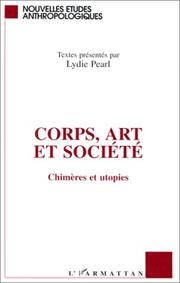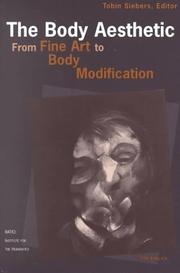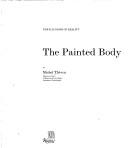| Listing 1 - 10 of 12 | << page >> |
Sort by
|
Book
ISBN: 9780748670505 0748670505 9780748670512 0748670513 9780748670499 0748670491 0748693750 1299735800 Year: 2013 Publisher: Edinburgh Edinburgh University Press
Abstract | Keywords | Export | Availability | Bookmark
 Loading...
Loading...Choose an application
- Reference Manager
- EndNote
- RefWorks (Direct export to RefWorks)
Inventions of the Skin illuminates a history of the stage technology of paint that extends backward to the 1460s York cycle and forward to the 1630s. Organized as a series of studies, the four chapters of this book examine goldface and divinity in York's Corpus Christi play, with special attention to the pageant representing The Transfiguration of Christ; bloodiness in Elizabethan and Jacobean drama, specifically blood's unexpected role as a device for disguise in plays such as Look About You (anon.) and Shakespeare's Coriolanus; racial masquerade within seventeenth-century court performances and popular plays, from Ben Jonson's Masque of Blackness to William Berkeley's The Lost Lady; and finally whiteface, death, and 'stoniness' in Thomas Middleton's The Second Maiden's Tragedy and Shakespeare's The Winter's Tale. Recovering a crucial grammar of theatrical representation, this book argues that the onstage embodiment of characters - not just the words written for them to speak - forms an important and overlooked aspect of stage representation.
Theatrical makeup. --- English drama --- Body art. --- Art, Body --- Body works (Art) --- Art, Modern --- Performance art --- Acting --- Make-up, Theatrical --- Makeup, Theatrical --- Stage makeup --- Costume --- Face painting --- Makeup artists --- History and criticism. --- Makeup

ISBN: 2738461344 Year: 1998 Publisher: Paris L'Harmattan
Abstract | Keywords | Export | Availability | Bookmark
 Loading...
Loading...Choose an application
- Reference Manager
- EndNote
- RefWorks (Direct export to RefWorks)
392 --- Zeden en gebruiken in het particuliere leven --- Body art. --- Chimera (Greek mythology) in art. --- Genetics in art. --- 392 Zeden en gebruiken in het particuliere leven --- Body art --- Chimera (Greek mythology) in art --- Genetics in art --- Art, Body --- Body works (Art) --- Art, Modern --- Performance art --- 392 Customs, manners, usage in private life --- Customs, manners, usage in private life
Book
ISBN: 1978802064 9781978802063 9781978802025 9781978802032 9781978802056 1978802021 197880203X 9781978802032 9781978802049 1978802056 9781978802056 Year: 2019 Publisher: New Brunswick, NJ
Abstract | Keywords | Export | Availability | Bookmark
 Loading...
Loading...Choose an application
- Reference Manager
- EndNote
- RefWorks (Direct export to RefWorks)
What is the role of pleasure and pain in the politics of art? In Touched Bodies, Mara Polgovsky Ezcurra approaches this question as she examines the flourishing of live and intermedial performance in Latin America during times of authoritarianism and its significance during transitions to democracy. Based on original documents and innovative readings, her book brings politics and ethics to the discussion of artistic developments during the "long 1980s". She describes the rise of performance art in the context of feminism, HIV-activism, and human right movements, taking a close look at the work of Diamela Eltit and Raúl Zurita from Chile, León Ferrari and Liliana Maresca from Argentina, and Marcos Kurtycz, the No Grupo art collective, and Proceso Pentágono from Mexico. The comparative study of the work of these artists attests to a performative turn in Latin American art during the 1980s that, like photography and film before, recast the artistic field as a whole, changing the ways in which we perceive art and understand its role in society.
Performance art --- Body art --- Art and society --- Art --- Art, Occidental --- Art, Visual --- Art, Western (Western countries) --- Arts, Fine --- Arts, Visual --- Fine arts --- Iconography --- Occidental art --- Visual arts --- Western art (Western countries) --- Arts --- Aesthetics --- Art and sociology --- Society and art --- Sociology and art --- Art, Body --- Body works (Art) --- Art, Modern --- Arts, Modern --- Happenings (Art) --- Performing arts --- History --- Political aspects --- Social aspects --- Art, Primitive
Book
ISBN: 9780429466038 0429880413 0429880421 042946603X 9780429880414 9780429880407 0429880405 9780429880421 9780754657729 0754657728 9781032083896 Year: 2019 Publisher: London Routledge
Abstract | Keywords | Export | Availability | Bookmark
 Loading...
Loading...Choose an application
- Reference Manager
- EndNote
- RefWorks (Direct export to RefWorks)
The first major scholarly investigation into the rich history of the marked body in the early modern period, this interdisciplinary study examines multiple forms, uses, and meanings of corporeal inscription and impression in France and the French Atlantic from the late sixteenth through early eighteenth centuries. Placing into dialogue a broad range of textual and visual sources drawn from areas as diverse as demonology, jurisprudence, mysticism, medicine, pilgrimage, commerce, travel, and colonial conquest that have formerly been examined largely in isolation, Katherine Dauge-Roth demonstrates that emerging theories and practices of signing the body must be understood in relationship to each other and to the development of other material marking practices that rose to prominence in the early modern period. While each chapter brings to light the particular histories and meanings of a distinct set of cutaneous marks—devil’s marks on witches, demon’s marks upon the possessed, devotional wounds, Amerindian and Holy Land pilgrim tattoos, and criminal brands—each also reveals connections between these various types of stigmata, links that were obvious to the early modern thinkers who theorized and deployed them. Moreover, the five chapters bring to the fore ways in which corporeal marking of all kinds interacted dynamically with practices of writing on, imprinting, and engraving paper, parchment, fabric, and metal that flourished in the period, together signaling important changes taking place in early modern society. Examining the marked body as a material object replete with varied meanings and uses, Signing the Body: Marks on Skin in Early Modern France shows how the skin itself became the register of the profound cultural and social transformations that characterized this era.
Body art --- 091.14:003 --- 091:003.5 --- Art, Body --- Body works (Art) --- Art, Modern --- Performance art --- 091:003.5 Handschriftenkunde. Handschriftencatalogi-:-Schrijfmaterialen --- Handschriftenkunde. Handschriftencatalogi-:-Schrijfmaterialen --- 091.14:003 Codices--schrift-- Zie ook: {930.272} Paleografie --- Codices--schrift-- Zie ook: {930.272} Paleografie --- History --- E-books --- Body marking --- Signs and symbols --- History. --- France --- Civilization.
Book
Abstract | Keywords | Export | Availability | Bookmark
 Loading...
Loading...Choose an application
- Reference Manager
- EndNote
- RefWorks (Direct export to RefWorks)
This publication enquires into the role and treatment of the body in the visual culture of contemporary China. What meanings are assigned to the body in artistic practice, what does it represent and what (hi)stories does it refer to? Considerable importance is ascribed to the body as a means of orientation and placement; as an arena and medium of social experience. 19 Chinese artists, theatre practitioners and theorists describe their personal experiences, put their thoughts and views up for discussion and explore how art can shed light on the individual and collective experiences that emerge in the wake of historical change and the anticipation of a newly won freedom. »For patient and careful readers this collection of textual and visual materials will not only provide an inspiring and refreshing insight into contemporary Chinese art but also an invitation to rethink and reposition artistic production in a globalized world.« Justyna Jaguscik, Asiatische Studien, 68/1 (2014)
Arts, Chinese --- Human figure in art. --- Theater --- Body art --- Art, Body --- Body works (Art) --- Art, Modern --- Performance art --- Dramatics --- Histrionics --- Professional theater --- Stage --- Theatre --- Performing arts --- Acting --- Actors --- Human body in art --- Art --- Composition (Art) --- Figurative art --- Anatomy, Artistic --- Figure drawing --- Figure painting --- Chinese arts --- History --- Art; Theatre; China; Culture; Body; Visual Culture; Arts; Image; Asian Art; Theatre Studies; Fine Arts --- Arts. --- Asian Art. --- Body. --- China. --- Culture. --- Fine Arts. --- Image. --- Theatre Studies. --- Theatre. --- Visual Culture.

ISBN: 9056621009 3893224459 Year: 1998 Publisher: Rotterdam Museum Boijmans Van Beuningen
Abstract | Keywords | Export | Availability | Bookmark
 Loading...
Loading...Choose an application
- Reference Manager
- EndNote
- RefWorks (Direct export to RefWorks)
Cataloog bij 'Kiss the future' in Museum Boymans-van Beuningen van kleding van de Belgische modeontwerper Walter van Beirendonck. De Franse kunstenares Orlan voorzag de gezichten van zichzelf en andere modellen van freak-achtige vervormingen: opgeplakte huidkleurige uitstulpingen als verfraaiing, in opzet vergelijkbaar met piercing. Deze gelaatssculptuur is in twee fotoseries mooi vastgelegd door Juergen Teller. De heldere teksten zijn van enkele buitenlandse modejournalisten. Het boek bevat ook kunstwerkjes op papier van Van Beirendonck. De eerste indruk 'weirdo's' verkeert bij nader inzien in 'boeiend experiment gecombineerd met prachtige en draagbare mode geprojecteerd op mensen als kunstwerk'. Het boek is fraai uitgevoerd. Een leuk boek, niet echt belangrijk en nogal prijzig ondanks de vele sjieke sponsors.
cat ed. Thimo te Duits, Walter Van Beirendonck --- van Beirendonck Walter --- kunst --- twintigste eeuw --- mode --- modefotografie --- fotografie --- Orlan --- Teller Juergen --- 7.071 VAN BEIRENDONCK --- 391 T.DUI --- 907.5 --- geschiedenis, klederdrachten, België --- Body art --- Fashion designers --- Fashion design --- Clothing and dress --- Clothing design --- Dress design --- Design --- Clothes designers --- Couturiers --- Custom garment designers --- Dress designers --- Designers --- Art, Body --- Body works (Art) --- Art, Modern --- Performance art --- Beirendonck, Walter van --- Van Beirendonck, Walter --- Porte, Mireille Suzanne Francette --- Exhibitions --- fashion [concept] --- modeontwerpers --- Beirendonck, van, Walter --- fashion [culture-related concept]

ISBN: 0472086731 Year: 2000 Publisher: Michigan University of Michigan press
Abstract | Keywords | Export | Availability | Bookmark
 Loading...
Loading...Choose an application
- Reference Manager
- EndNote
- RefWorks (Direct export to RefWorks)
edited by Tobin Siebers --- kunst --- Calle Sophie --- gender studies --- feminisme --- erotiek --- Inuit --- kunsttheorie --- lichamelijkheid --- eskimo's --- Raymond Isabelle --- anorexie --- plastische chirurgie --- kinderen --- portret --- kinderportretten --- 7.01 --- Body art. --- Body image. --- Body marking. --- Human body --- Social aspects. --- Symbolic aspects. --- Body art --- Body image --- Body marking --- Symbolic aspects of the human body --- Symbolism --- Body modification, Non-therapeutic (Body marking) --- Marking, Body --- Non-therapeutic body modification (Body marking) --- Beauty, Personal --- Manners and customs --- Image, Body --- Imagery (Psychology) --- Mind and body --- Person schemas --- Personality --- Self-perception --- Art, Body --- Body works (Art) --- Art, Modern --- Performance art --- Social aspects --- Symbolic aspects
Book
ISBN: 9782753517271 9782760533929 2753517274 9782760533936 276053393X 2760533921 Year: 2012 Publisher: Rennes Presses universitaires de Rennes
Abstract | Keywords | Export | Availability | Bookmark
 Loading...
Loading...Choose an application
- Reference Manager
- EndNote
- RefWorks (Direct export to RefWorks)
À notre époque, les nouvelles technologies contribuent largement à l'évolution des langages scéniques modifiant profondément les conditions de représentation et intensifiant toujours davantage les effets de présence et les effets de réel. Ces technologies sont souvent liées à l'émergence de nouvelles formes scéniques qui transgressent les limites des disciplines et se caractérisent par des spectacles à l'identité instable, mouvante, en perpétuelle redéfinition. Projections, installations interactives, environnements immersifs, spectacles sur la toile, les sens(ations) sont plus que jamais sollicité(e)s. Le performeur y est confronté à un Autre virtuel, à la fois personnage et partenaire. Quant au corps, charnel, physique, palpable, il constitue encore la trace incontestée de l'homme dans ces espaces où la déréalisation fait loi. Contrepoint d'une culture du virtuel, le corps semble rester au coeur des dispositifs (scénique, interactif, immersif). Quel(s) corps ces oeuvres convoquent-elles ? Comment ces dernières renouvellent-elles la dynamique entre performeurs, spectateurs et dispositifs ? Quelles sont les diverses modalités d'interpénétration entre le virtuel et le réel dans ces formes d'art ? Voilà autant de questions auxquelles ce livre tente de répondre. Celles-ci sont le résultat de plusieurs années de recherche consacrées aux effets de présence et aux effets de réel. C'est le résultat de ces explorations effectuées par l'équipe de recherche "Performativité et effets de présence" de l'université du Québec à Montréal (sous la direction de Josette Féral et Louise Poissant), que le lecteur pourra trouver dans ce premier volume consacré au corps. Body Remix reprend le titre du spectacle de la chorégraphe Marie Chouinard présenté en 2005.
Performing arts --- Theater --- Aesthetics --- Arts du spectacle --- Théâtre --- Esthétique --- Technological innovations --- Production and direction --- Innovations --- Production et mise en scène --- Art and technology --- Arts du spectacle et technologie --- Art corporel. --- Art de performance. --- Art et technologie. --- Dans l'art --- Au théâtre --- Theatrical science --- anno 1900-1999 --- Corps humain --- Arts --- Body art --- Performance art --- Arts, Modern --- Arts du spectacle et technologie. --- Dans l'art. --- Au théâtre. --- Performance --- Corps humain, thème --- Technologie et art --- Body art. --- Performance art. --- Art and technology. --- Technology and art --- Technology --- Happenings (Art) --- Art, Body --- Body works (Art) --- Art, Modern --- Arts, Modern - 20th century --- Arts, Modern - 21st century

ISBN: 0847805395 Publisher: New York Rizzoli International Publications
Abstract | Keywords | Export | Availability | Bookmark
 Loading...
Loading...Choose an application
- Reference Manager
- EndNote
- RefWorks (Direct export to RefWorks)
Body art --- Body marking --- Human body --- (069) --- 7.049 --- Belgische mode ; modeontwerpers ; 1990-2001 --- Body Art --- Chanel, Gabrielle --- Kawakubo, Rei ; Comme des Garçons --- Menselijk lichaam ; mutilaties ; verminkingen --- Mode ; schoonheidsidealen ; schoonheidsnormen --- Tatoeages --- Tentoonstellingscatalogi ; Antwerpen ; mode 2001 landed-geland --- Thema's in de kunst ; lichaamsornamentiek ; versierde lichaam --- Body modification, Non-therapeutic (Body marking) --- Marking, Body --- Non-therapeutic body modification (Body marking) --- Beauty, Personal --- Manners and customs --- Art, Body --- Body works (Art) --- Art, Modern --- Performance art --- Social aspects --- (Musea. Collecties) --- Iconografie ; verschillende onderwerpen --- Ethnology. Cultural anthropology --- body arts [discipline] --- tattoos
Book
ISBN: 9783862065660 9781942884095 3862065669 9782373720303 2373720302 9782373720204 2373720205 9782373720297 2373720299 1942884095 Year: 2016 Publisher: Dortmund Verlag Kettler
Abstract | Keywords | Export | Availability | Bookmark
 Loading...
Loading...Choose an application
- Reference Manager
- EndNote
- RefWorks (Direct export to RefWorks)
"This major new Yves Klein overview shows how Klein transformed his life into a myth that blurred the boundary between art and biography. It includes around 300 unearthed archival photographs--many of which are published for the first time--of Klein, his works, and their production. Always an innovator, Klein spanned many mediums, boldly exploring musical composition, sculpture, performance, photography, theater, film and theoretical writing, in addition to the blue monochrome painting for which he is so famed. Reproductions of artworks are interspersed with photographs of and quotations by Klein, guiding readers through a personal history of key works such as "Leap into the Void" and the Monochrome and Feuer exhibition. Most importantly, this book offers a new look behind the scenes of his performances, uncovers the genesis of his famous Anthropometries and Fire Paintings and portrays Klein at work in his studio, in private settings and on his travels. There are also numerous contact prints with lesser-known photos and snapshots that are not among the more famous pictures released for publication. Unlike most of his contemporaries, Klein always viewed photography as a lens through which to dramatize his subjects, and chose carefully who could photograph him. The imagery in this monograph blurs the artist?s work and life in a way that both maintains and deconstructs the myth of Yves Klein."--Distributor's website.
Art --- photographs --- sculpture [visual works] --- performance art --- easel paintings [paintings by form] --- nudes [representations] --- studios [work spaces] --- burning --- Klein, Yves --- Body art --- Performance art --- Conceptual art --- 7.07 --- Art, Conceptual --- Concept art --- Language art (Fine arts) --- Possible art --- Post-object art --- Art, Modern --- Earthworks (Art) --- Sky art --- Arts, Modern --- Happenings (Art) --- Performing arts --- Art, Body --- Body works (Art) --- Kunstenaars met verschillende disciplines, niet traditioneel klasseerbare, conceptuele kunstenaars A - Z --- Klein, Yves, --- 75.07 --- Nouveau Réalisme --- Performances ; Body Art --- Klein, Yves 1928-1962 (°Nice, Frankrijk) --- Happenings --- Monochrome schilderkunst ; Yves Klein --- Schilderkunst ; schilders A-Z --- paintings [visual works]
| Listing 1 - 10 of 12 | << page >> |
Sort by
|

 Search
Search Feedback
Feedback About UniCat
About UniCat  Help
Help News
News